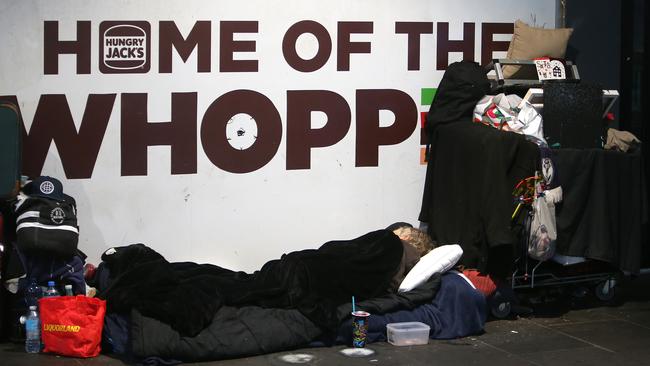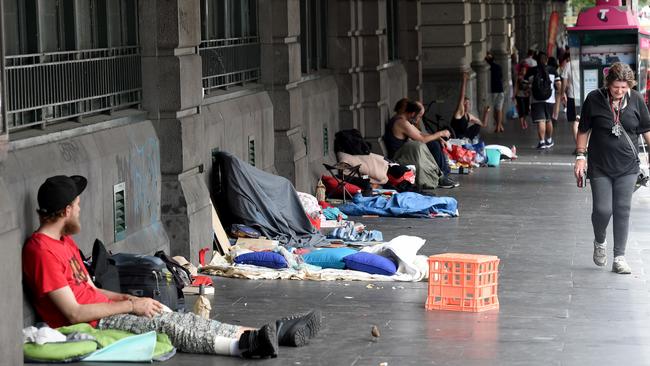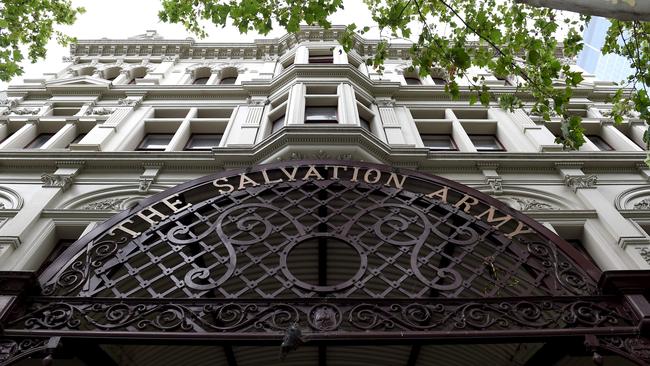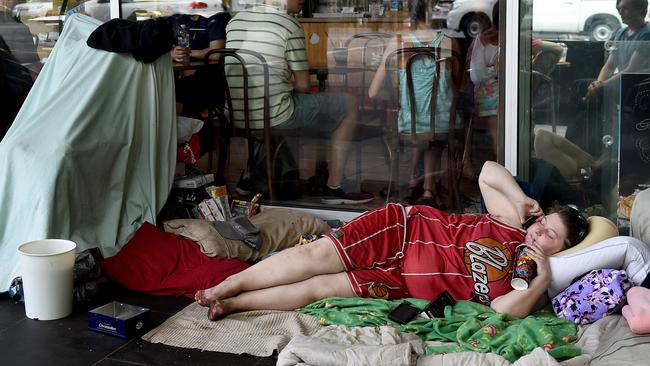Almost 7400 Victorians homeless, government figures reveal
ALMOST 7400 Victorians are sleeping on the streets, living in cars, or squatting in vacant buildings, alarming new government figures reveal.
VIC News
Don't miss out on the headlines from VIC News. Followed categories will be added to My News.
- Half of people sleeping on Melbourne streets not genuine homeless: Salvos
- Melbourne City Council announces crackdown on homeless tents
- Three days homeless on streets of Melbourne
ALMOST 7400 Victorians are sleeping on the streets, living in cars, or squatting in vacant buildings, government figures on homelessness reveal.
And more than 1200 people said they had been homeless for longer than six months.
Of 79 local government areas, 50 have registered a homeless population.

The alarming figures released by the Department of Housing and Human Services do not include Victorians living with friends and family.
Greater Dandenong was among the worst-affected: 629 homeless people there asked for help last financial year.
Geelong had 567 people living without shelter; the border town of Wodonga had 385.
Bendigo had 340, Ballarat had 201, and Brimbank and Frankston both registered 322.

The Salvation Army’s Major Brendan Nottle said the growth of homelessness outside the city was alarming.
“This really just shows us that homelessness starts in rural and suburban areas,’’ Maj Nottle said.
“It is often people who are younger and it’s more hidden than in the city, where it is much more visible with people sleeping on the streets.
“We really need to get serious about funding services in rural and suburban areas.’’

Housing Minister Martin Foley said the figures were “disturbing but not surprising’’, and services must be co-ordinated to tackle the problem.
“We have been seeing for the last six years a growth in housing and homelessness problems, but it is really bigger than we all thought,’’ he said.
Mr Foley said the government’s focus this year would be on co-ordinating services and cracking down on agencies that, though well-meaning, were not helping to “break the cycle’’ of homelessness.

Last year, the government announced an extra $600 million in housing and homelessness support.
Port Phillip had the highest homeless population: 1271 people had registered for assistance there. Mr Foley said the high figure was because of the local services available.
The Municipal Association of Victoria’s interim president Coral Ross said councils worked hard to fight homelessness.
“Many councils work to prevent and reduce homelessness by facilitating solutions in their communities, such as connecting vulnerable people with housing and welfare agencies, and affordable housing through land use planning,’’ she said.
Melbourne Lord Mayor Robert Doyle is preparing to sweep city streets clean of makeshift camps of homeless people next month.
The Melbourne City Council has put aside a $2 million fighting fund for the cause.
Its efforts to tackle the homelessness crisis will also include a 24-hour drop-in centre, and $100,000 for a feasibility study on new options to accommodate the homeless.


